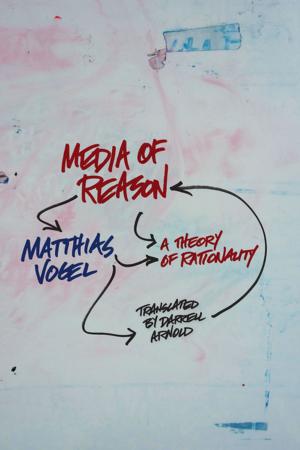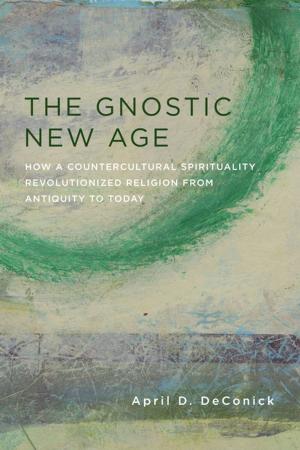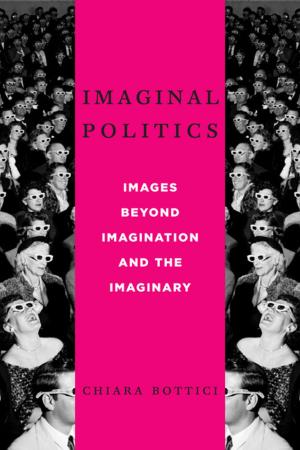Before Victoria
Extraordinary Women of the British Romantic Era
Nonfiction, History, Modern, 18th Century, Social & Cultural Studies, Social Science, Gender Studies, Women&, British| Author: | Elizabeth Denlinger | ISBN: | 9780231509930 |
| Publisher: | Columbia University Press | Publication: | April 20, 2005 |
| Imprint: | Columbia University Press | Language: | English |
| Author: | Elizabeth Denlinger |
| ISBN: | 9780231509930 |
| Publisher: | Columbia University Press |
| Publication: | April 20, 2005 |
| Imprint: | Columbia University Press |
| Language: | English |
It might not have the been the revolution that Mary Wollstonecraft called for in A Vindication of the Rights of Woman (1792), but the Romantic era did witness a dramatic change in women's lives. Combining literary and cultural history, this richly illustrated volume brings back to life a remarkable, though frequently overlooked, group of women who transformed British culture and inspired new ways of understanding feminine roles and female sexuality.
What was this revolution like? Women were expected to be more moral, more constrained, and more private than in the eighteenth century, when women such as Georgiana Cavendish, Duchess of Devonshire crafted bold public personas. Genteel women no longer laughed aloud at bawdy jokes and noblewomen ran charity bazaars instead of private casinos. By 1800, motherhood had become a sacred calling and women who could afford to do so devoted themselves to the home. While this idealization of domesticity kept some women off the streets, it afforded others new opportunities. Often working from home, women wrote novels and poetry, sculpted busts, painted portraits, and conducted scientific research. They also seized the chance to do good, and crafted new public roles for themselves as philanthropists and reformers.
Now-obscure female astronomers, photographers, sculptors, and mathematicians share these pages with celebrated writers such as Mary Shelley, her mother Mary Wollstonecraft, and Mary Robinson, who in addition to being a novelist and actress was also the mistress of the Prince of Wales. This book also makes full use of The New York Public Library's extensive collections, including graphic works and caricatures from the late eighteenth and early nineteenth centuries, manuscripts, hand-colored illustrations, broadsides, drawings, oil paintings, notebooks, albums and early photographs. These vivid, beautiful, and often humorous images depict these women, their works, and their social and domestic worlds.
It might not have the been the revolution that Mary Wollstonecraft called for in A Vindication of the Rights of Woman (1792), but the Romantic era did witness a dramatic change in women's lives. Combining literary and cultural history, this richly illustrated volume brings back to life a remarkable, though frequently overlooked, group of women who transformed British culture and inspired new ways of understanding feminine roles and female sexuality.
What was this revolution like? Women were expected to be more moral, more constrained, and more private than in the eighteenth century, when women such as Georgiana Cavendish, Duchess of Devonshire crafted bold public personas. Genteel women no longer laughed aloud at bawdy jokes and noblewomen ran charity bazaars instead of private casinos. By 1800, motherhood had become a sacred calling and women who could afford to do so devoted themselves to the home. While this idealization of domesticity kept some women off the streets, it afforded others new opportunities. Often working from home, women wrote novels and poetry, sculpted busts, painted portraits, and conducted scientific research. They also seized the chance to do good, and crafted new public roles for themselves as philanthropists and reformers.
Now-obscure female astronomers, photographers, sculptors, and mathematicians share these pages with celebrated writers such as Mary Shelley, her mother Mary Wollstonecraft, and Mary Robinson, who in addition to being a novelist and actress was also the mistress of the Prince of Wales. This book also makes full use of The New York Public Library's extensive collections, including graphic works and caricatures from the late eighteenth and early nineteenth centuries, manuscripts, hand-colored illustrations, broadsides, drawings, oil paintings, notebooks, albums and early photographs. These vivid, beautiful, and often humorous images depict these women, their works, and their social and domestic worlds.















